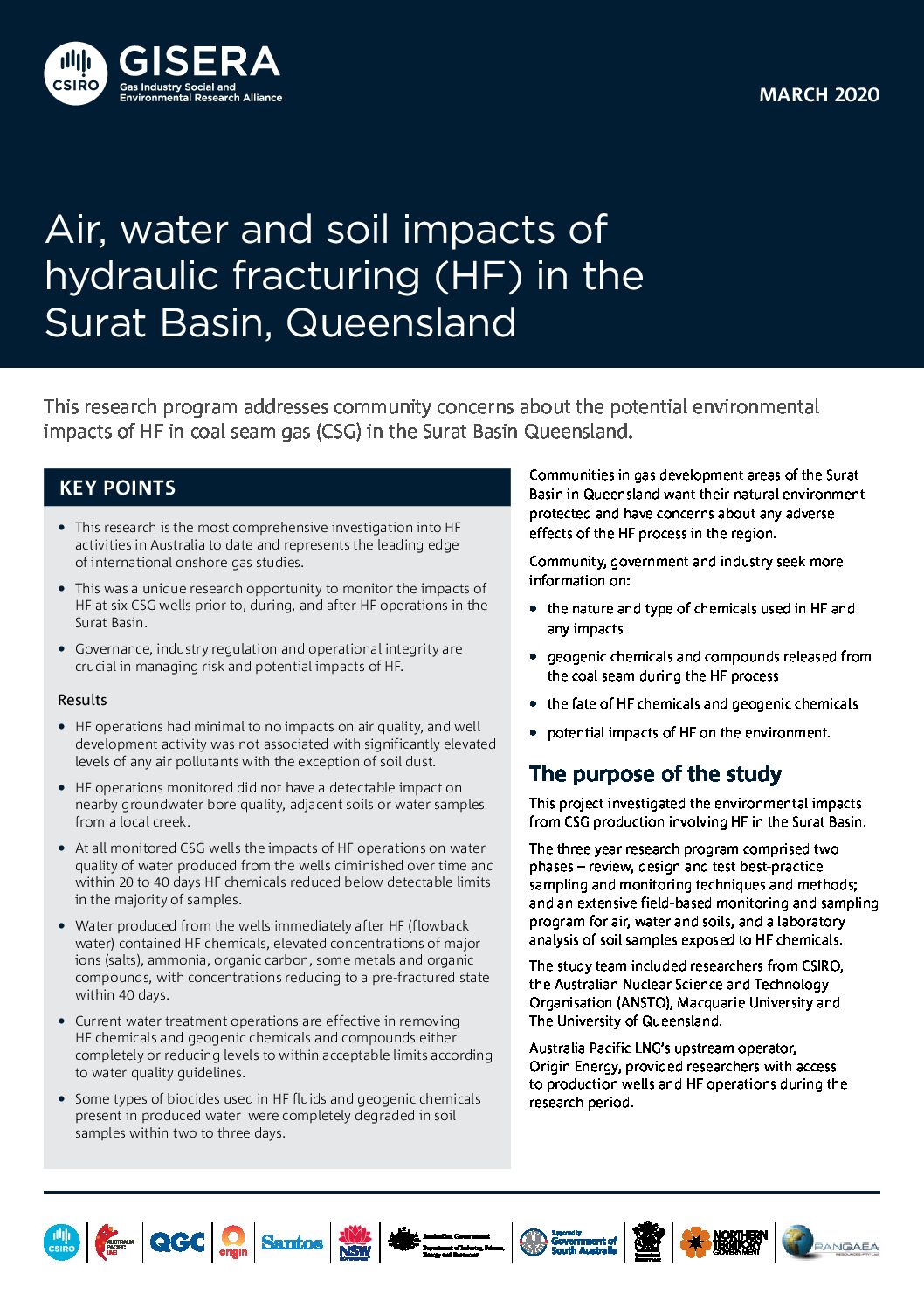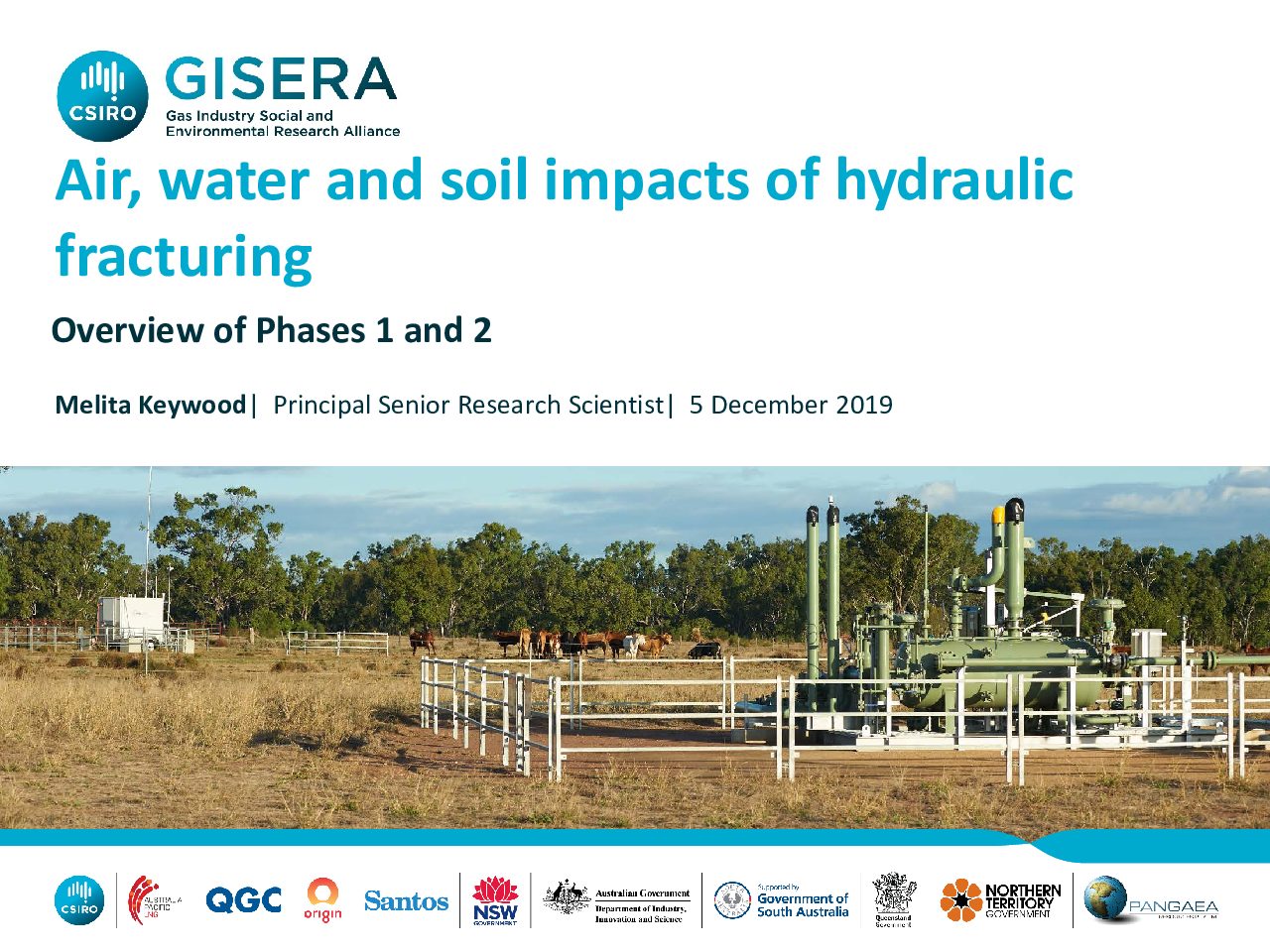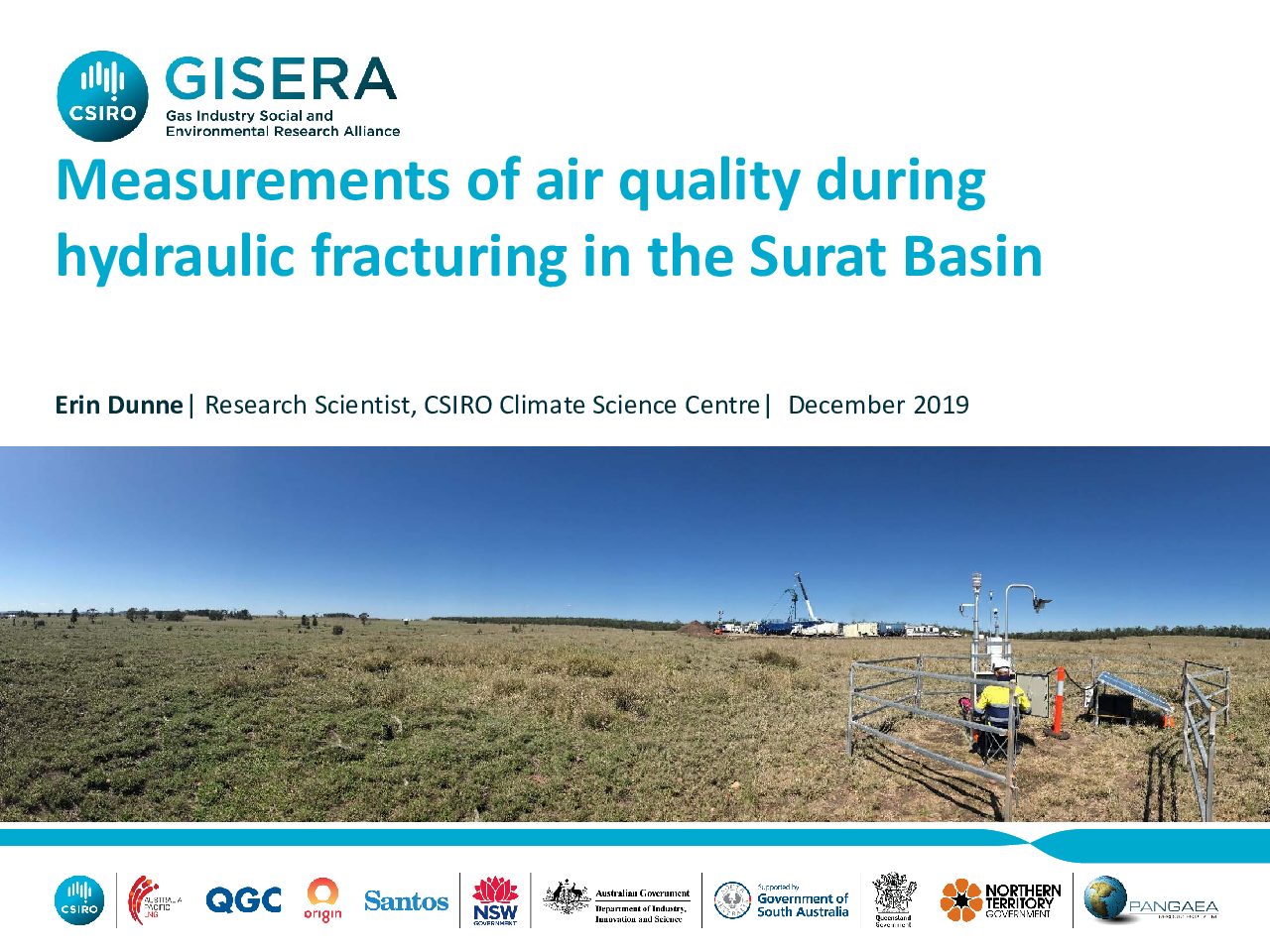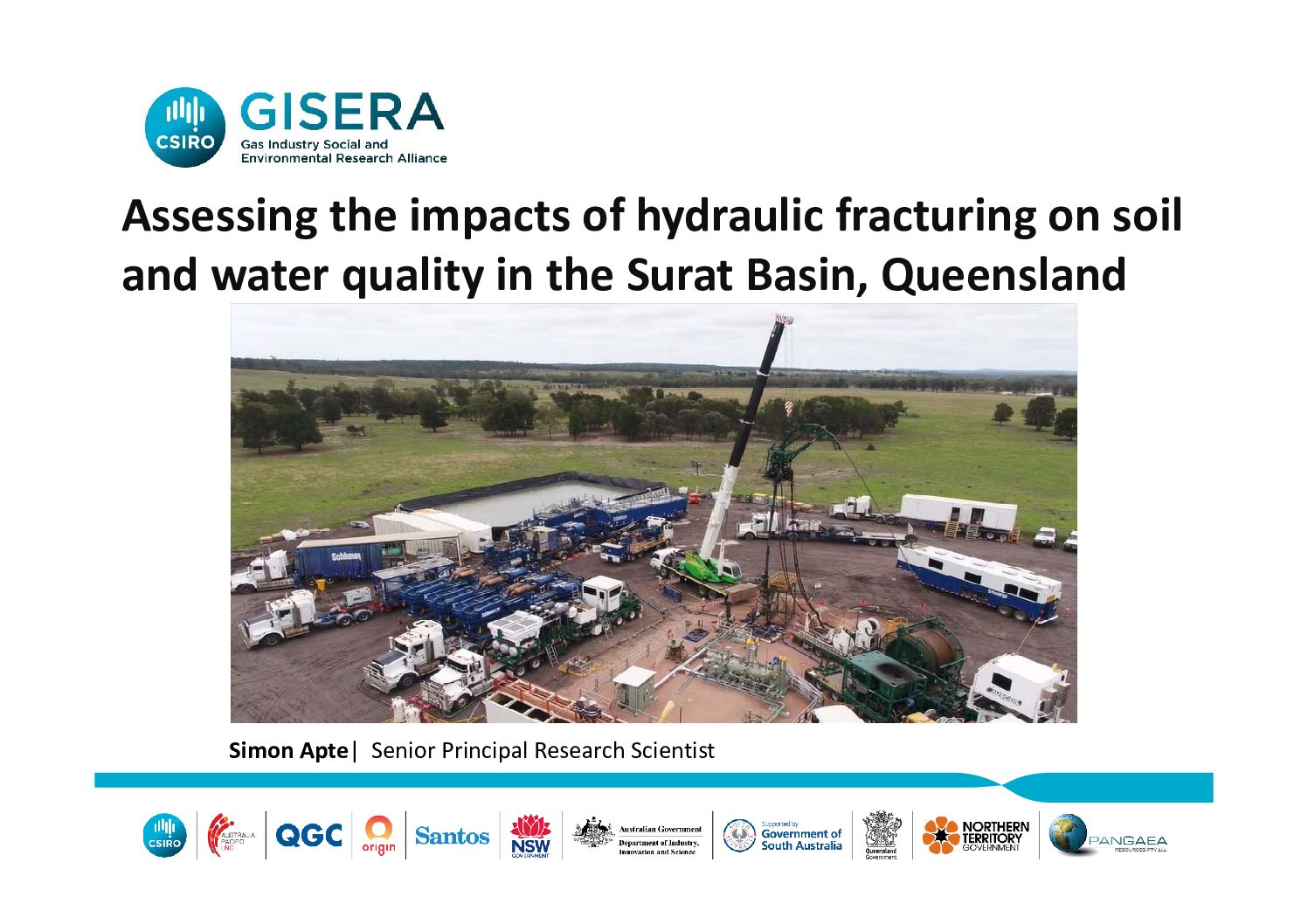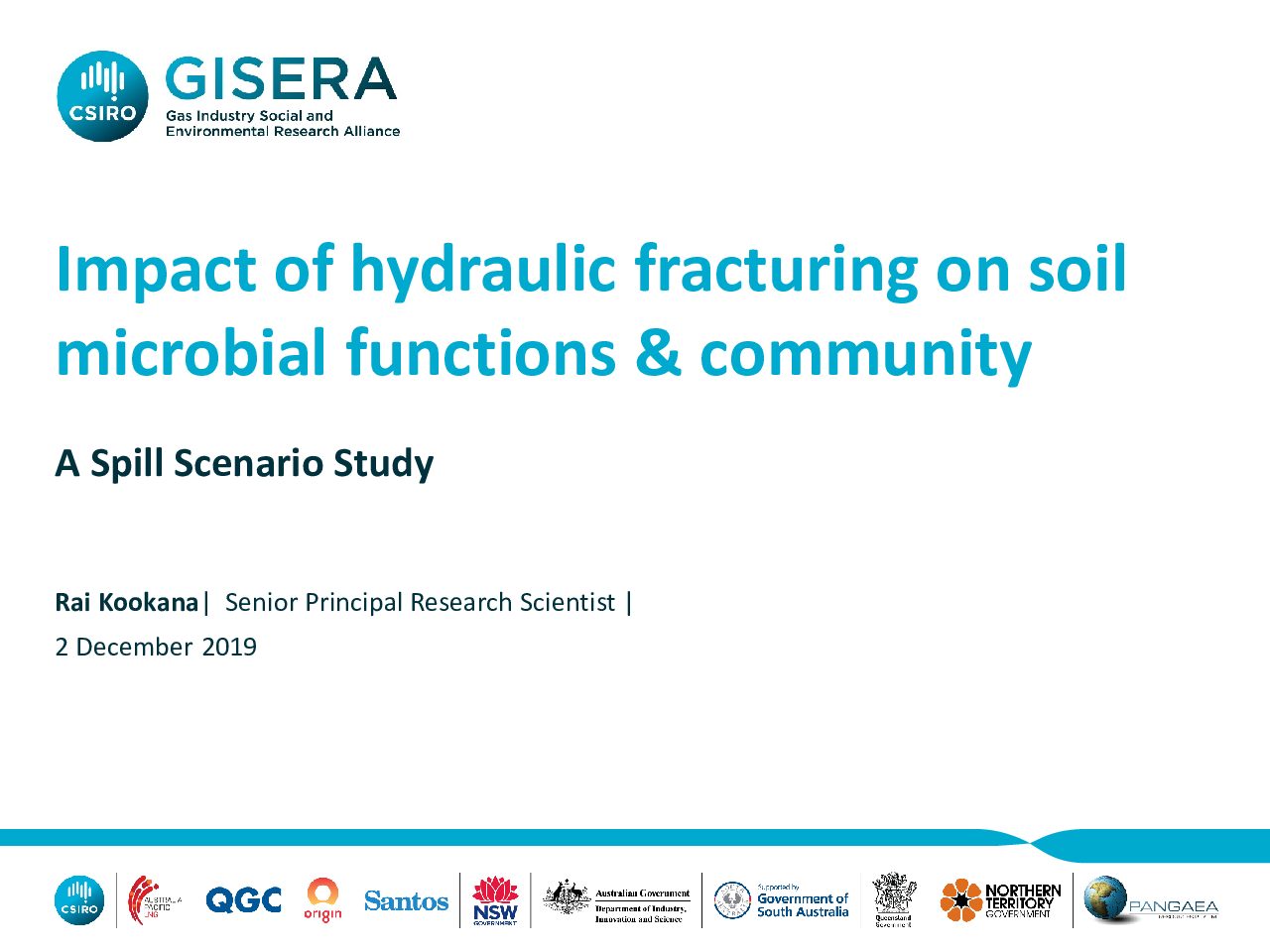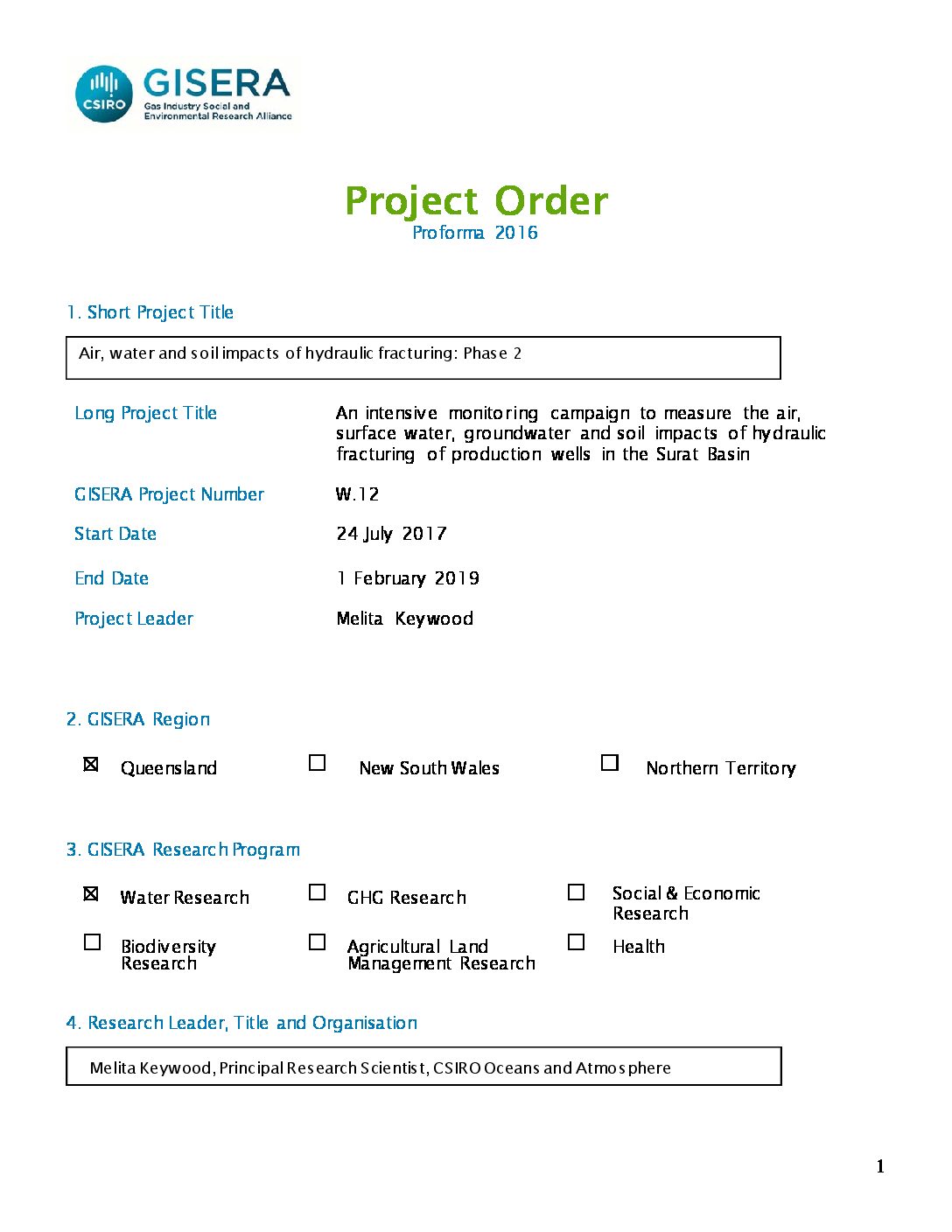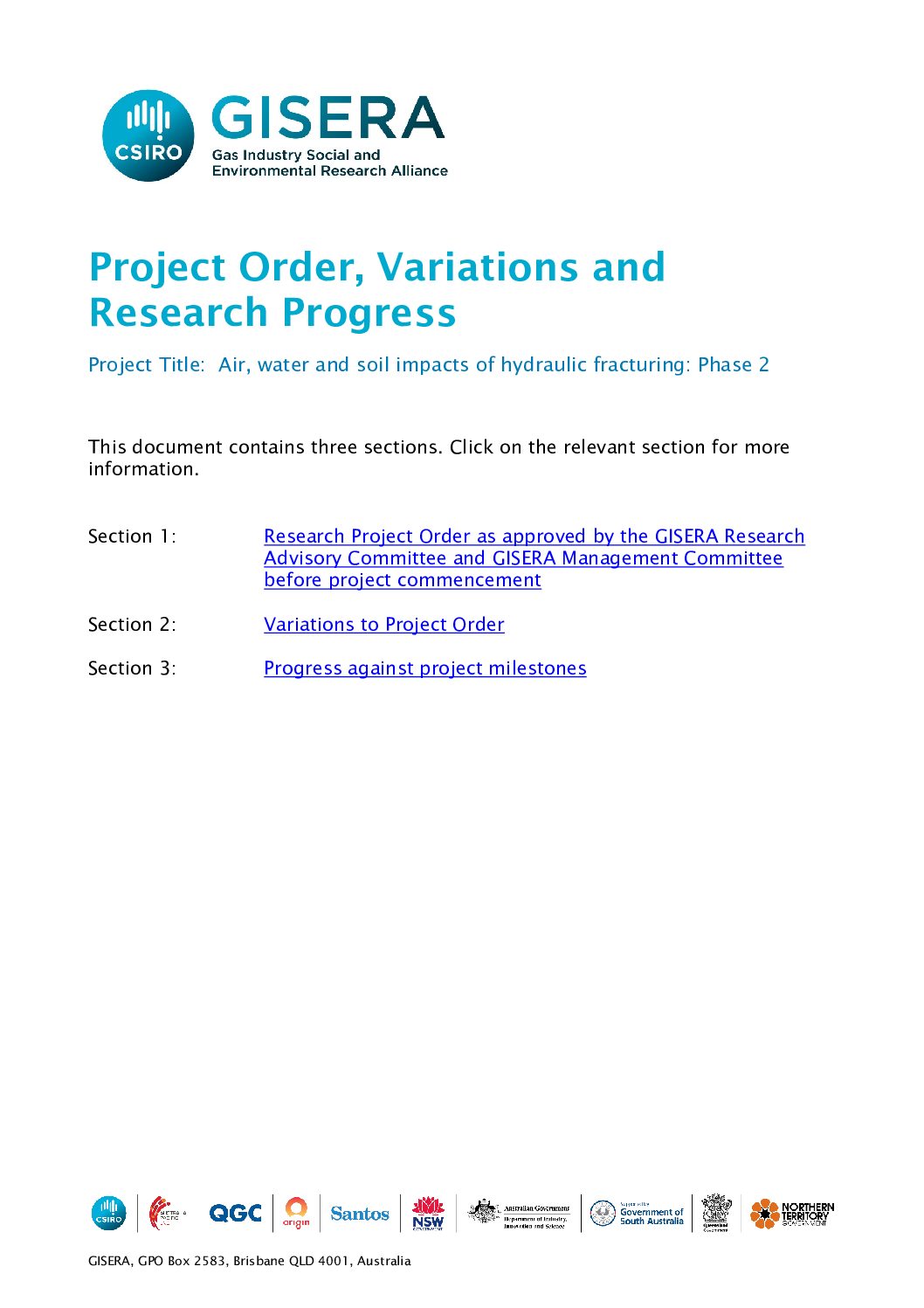Air, water and soil impacts of hydraulic fracturing, Phase 2
This research is the most comprehensive investigation into hydraulic fracturing activities in Australia to date and represents the leading edge of international onshore gas studies.
This was a unique research opportunity to monitor the impacts of hydraulic fracturing at six CSG wells prior to, during, and after hydraulic fracturing operations in the Surat Basin. Governance, industry regulation and operational integrity are crucial in managing risk and potential impacts of hydraulic fracturing.
Results
- Hydraulic fracturing operations had minimal to no impacts on air quality, and well development activity was not associated with significantly elevated levels of any air pollutants with the exception of soil dust.
- Hydraulic fracturing operations monitored did not have a detectable impact on nearby groundwater bore quality, adjacent soils or water samples from a local creek.
- At all monitored CSG wells the impacts of hydraulic fracturing operations on water quality of water produced from the wells diminished over time and within 20 to 40 days hydraulic fracturing chemicals reduced below detectable limits in the majority of samples.
- Water produced from the wells immediately after (flowback water) contained hydraulic fracturing chemicals, elevated concentrations of major ions (salts), ammonia, organic carbon, some metals and organic compounds, with concentrations reducing to a pre-fractured state within 40 days.
- Current water treatment operations are effective in removing hydraulic fracturing chemicals and geogenic chemicals and compounds either completely or reducing levels to within acceptable limits according to water quality guidelines.
- Some types of biocides used in hydraulic fracturing fluids and geogenic chemicals present in produced water were completely degraded in soil samples within two to three days.
00:00 [Music plays]
00:00 GISERA Title
00:05 Title Characterising air, water and soils during hydraulic fracturing of CSG wells in the Surat Basin, Queensland
00:08 (Narrator) Coal seam gas, otherwise known as CSG, is a form of natural gas that has been powering Australian households since it was first produced in Queensland in 1997.
00:18 CSG is mainly methane found within coal deposits trapped underground by water pressure.
00:24 It is extracted through wells drilled between 300 and 1,000 metres deep, through rock layers to the coal seam.
00:32 If water and gas don’t flow freely, hydraulic fracturing may be used to increase the rate of flow.
00:40 Hydraulic fracturing involves perforating the well casing at different levels to gain access to the coal seam.
00:46 The potential health and environmental impacts of using hydraulic fracturing to stimulate gas production from wells are issues of community concern.
00:54 To answer questions around the safety of hydraulic fracturing processes for the environment and people’s health, C.S.I.R.O. has undertaken comprehensive research through its Gas Industry Social and Environmental Research Alliance (or GISERA).
01:07 During 2018, researchers spent months in the field investigating the air, soil and water before, during and after hydraulic fracturing events in the Surat Basin, Queensland.
01:20 Their aim was to better understand the impacts of hydraulic fracturing and provide information to government, industry and the community.
01:28 Air monitoring stations were set-up next to wells that underwent hydraulic fracturing.
01:34 SIGNPOST – AIR QUALITY MONITORING
Researchers were able to measure the air quality before, during and after hydraulic fracturing activities to quantify any changes.
Key results of the air study were that levels of atmospheric pollutants met air-quality objectives for the majority of the study period. Short-term increases in some pollutants were found at sites next to wells and at sites not impacted by hydraulic fracturing. The dominant sources of air pollutants in the background atmosphere were fires, dust, transport for industry and agriculture, natural sources, such as sea salt and indirect emissions .
TEXT Atmospheric pollutants met air-quality objectives during the study
Short-term increases were recorded for some pollutants
Fire, dust, transport, natural sources and indirect emissions (secondary production in the atmosphere)
02:09 SIGNPOST – WATER QUALITY MONITORING
02:09 C.S.I.R.O. land and water scientists collected and analysed water and soil samples to determine the concentration of any potential contaminants.
02:17 More than 100 water samples and up to 50 soil samples were taken to investigate the chemical composition of material that goes down the well, and what comes back up – including those naturally occurring (or geogenic) chemicals.
02:31 Researchers worked in C.S.I.R.O. laboratories using highly sensitive chemical instruments to measure concentrations of target chemicals in environmental samples to very low concentrations. In this study, over 150 potential contaminants were measured in water and soil samples collected in areas of the Surat Basin subjected to hydraulic fracturing.
Key results showed that no hydraulic fracturing chemicals were detected in soil, ground or surface water samples. Hydraulic fracturing chemicals were measured in produced water samples but were no longer detected soon after hydraulic fracturing activities ceased. Similarly, geogenic compounds (that is, naturally occurring chemicals) were measured in the produced water but then returned to a pre-hydraulic fracturing state. Water treatment operations remove or effectively reduce hydraulic fracturing and geogenic chemicals from produced waters,.
TEXT Hydraulic fracturing (HF) chemicals were not detected in soil, ground or surface water samples
HF chemicals were present in produced waters and concentrations decreased within 20-40 days
Elevated levels of geogenic chemicals were detected in produced waters and returned to pre-HF state over time
Water treatment effectively removes HF and geogenic chemicals or reduces them to within acceptable concentrations
03:24 SIGNPOST – LABORATORY SOILS TESTING
03:24 To test the direct impacts of chemicals on soil types representative of those in the region, a laboratory study under controlled conditions exposed soils to hydraulic fracturing fluids and produced waters.
03:35 The degradation and movement of the added chemicals in soils over time were then measured.
Key results of the laboratory study showed that soil microbial communities were effective in degrading some types of biocides and geogenic chemicals in soil samples within 72 hours. Some soil microbial activity was affected by the addition of hydraulic fracturing fluids, including impacts on nitrifying microorganisms. Recovery of microbial communities may be faster in field conditions so further research is needed to determine potential impacts on microbial communities in the field.
TEXT Soil microbes degraded some biocides and geogenic chemicals within 72 hours
Some soil microbial activity was affected by HF fluids
Some nitrifying microorganisms were affected by HF fluids
04:01 Recovery of microbial communities may be faster in field conditions, so further research is needed to determine potential impacts of microbial communities in the field
04:11 This study is the first of its kind in Australia. Researchers had unprecedented access to study areas in the vicinity of gas industry wells subjected to hydraulic fracturing operations. This allowed them to look, in detail, at the impacts of hydraulic fracturing chemicals on air, water and soils.
04:33 The research quality and independence of C.S.I.R.O.’s GISERA projects, just like this one, are managed through a panel of external independent scientists who review the study outcomes.
04:44 Reports and data are now available on the C.S.I.R.O.’s GISERA website at gisera.csiro.au.
04:56 [Ends]


